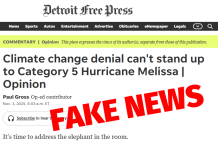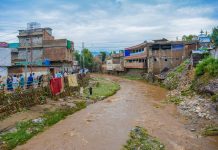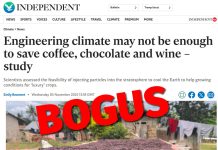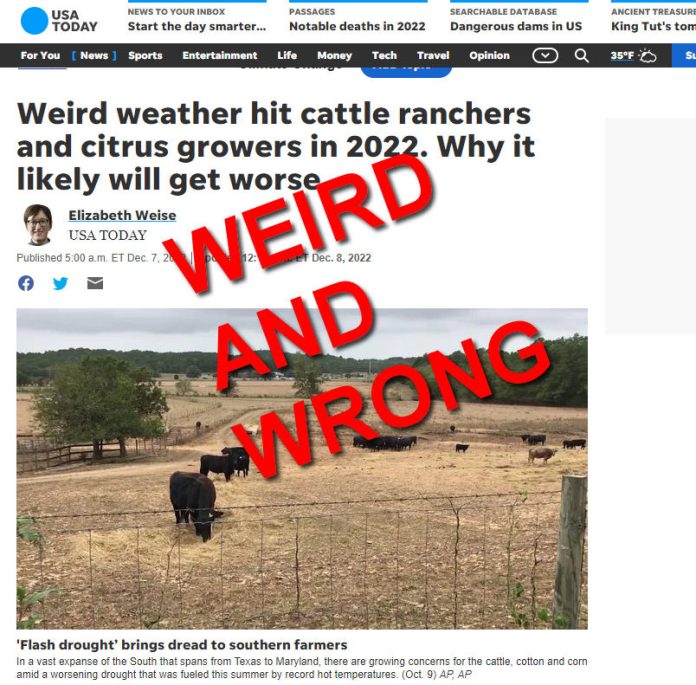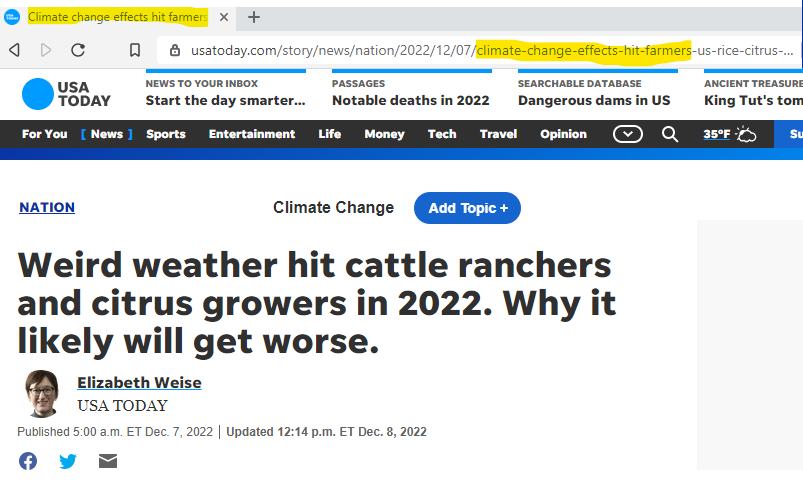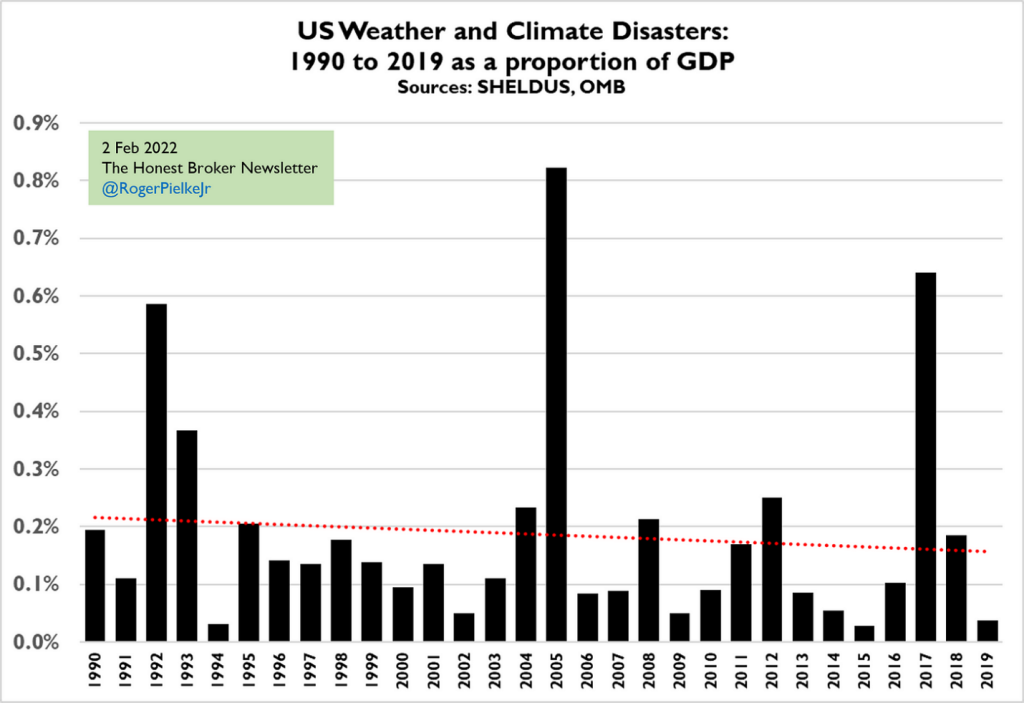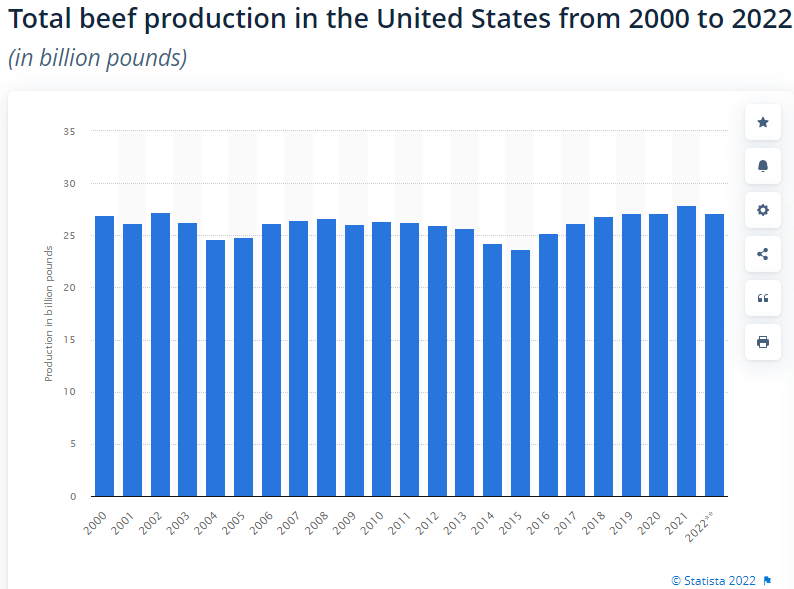A USA Today story from December 7th, 2022 by Elizabeth Weise claims climate change is causing droughts and other “weird weather,” that is hampering crop production. This is false. Real world data reveal no increase in drought or unusual weather trends that can be attributed to human caused climate change.
Per the original USA Today story as shown in the Google News feed:
Surprisingly, when you click on the link to the story, you get this (see screencap below), note the yellow highlights:
In addition to the headline switcheroo removing “climate change effects,” also gone from the story is the phrase “Experts tie the troubles to climate…”
Apparently, some editor knew the original story headline wasn’t factual, and made a change. Perhaps editorial integrity exists in the USA Today newsroom. For example, maybe the editor realized hurricanes and floods aren’t getting worse, or that drought is always happening somewhere on the planet and has throughout the Earth’s history.
Unfortunately, a number of false claims about weather and climate remain in the article.
First, let’s take on these two paragraphs:
This has been a year of extreme weather, including ruinous floods, horrific hurricanes, unrelenting heat, drought and massive rainfall events. Farmers, always at the mercy of the weather, have taken a hit.
In 2022, so far there have been over a dozen climate disaster events with losses exceeding $1 billion, according to the National Oceanic and Atmospheric Administration.
In the first paragraph, extreme weather is mentioned, and there is the factual statement “Farmers, always at the mercy of the weather, have taken a hit.” That’s been true from the very dawn of agriculture, and it is nothing new.
But the second paragraph is where Weise runs off the rails – she switched to “climate disaster events.” Clearly, she doesn’t know the difference between weather versus climate. What we experience on a day-to-day basis are weather events, not climate events. Weather is not climate because weather doesn’t last for 30 years. Climate is an average of weather over 30 years.
Unfortunately, Weise probably picked up the confusion from the National Center for Environmental Information (NCEI) who made an October 11, 2002 report titled “Billion-Dollar Weather and Climate Disasters” that could not properly distinguish between weather and climate either.
Concerning the supposed rising costs of extreme weather events, Professor Roger Pielke Jr., Ph.D., examined historical data on weather disaster losses and found no measurable increase in costs from so-called “climate disasters.” Indeed, rather than increasing as claimed by Weise, the inflation adjusted costs of weather related catastrophes have declined over the last 20 years as a percentage of GDP. (see Figure 1, below)
Figure 1. The trend of U.S. Weather and Climate Disasters as a proportion of Gross Domestic Product. Graph by Dr. Roger Pielke Jr. Data from Spatial Hazard Events and Losses Database for the United States (SHELDUS).
Weise writes:
It’s a pattern scientists have been warning about for decades, that higher global temperatures will bring on “weather weirding.”
…
Climate change can’t be directly blamed for every bad harvest or extreme weather event this year, but the effects of climate change – including drought and rainier hurricanes – hurt harvests across the nation in 2022. Climate models make clear more is coming.
Time and again, climate models have been shown to be inaccurate. The model scenario most often cited by journalists as being a harbinger of a doomsday, RCP 8.5, has been shown by science to be not just flawed, but highly exaggerated.
Nor does crop production data support the USA Today and Weise’s assertions that climate change is harming agricultural production. Indeed, data form the U.N. Food and Agriculture Organization directly refutes such claims. Weise writes rice production is being affected by climate related disasters. There is no evidence of it in the data shown in Figure 2.
Figure 2. Global rice production. FAO data recorded between 1994 and 2020. Source: FAOStat. http://www.fao.org/faostat/en/
FAO data recorded between 2000 and 2020 show rice production increased more than 26 percent worldwide, setting new records for production 12 times.
Likewise, although Weise claims U.S. Cattle production is being harmed by climate change, data shows no decline in cattle production during the most recent 20 years of modest warming. (See Figure 3, below).
Figure 3. U.S. total beef production 2000-2022
Statista, the source of Figure 3 writes:
The total beef production in the United States is estimated to be 27.17 billion pounds in 2022, down from 27.95 billion pounds in the previous year. Over the last two decades, the total U.S. beef production has fluctuated slightly but remained stable overall.
Where then is the supposed effect of climate change induced “weather weirding” on crop and cattle production? It doesn’t show up in the long-term data.
USA Today and Weise are engaged in Climate Change Catastrophism, promoting climate crisis scare stories which lack a basis in real world data. Unfortunately, that seems to be the status quo for so-called journalism these days and it does a disservice to the American public by promoting alarm about food security, rather than telling the good news about abundant harvests.




